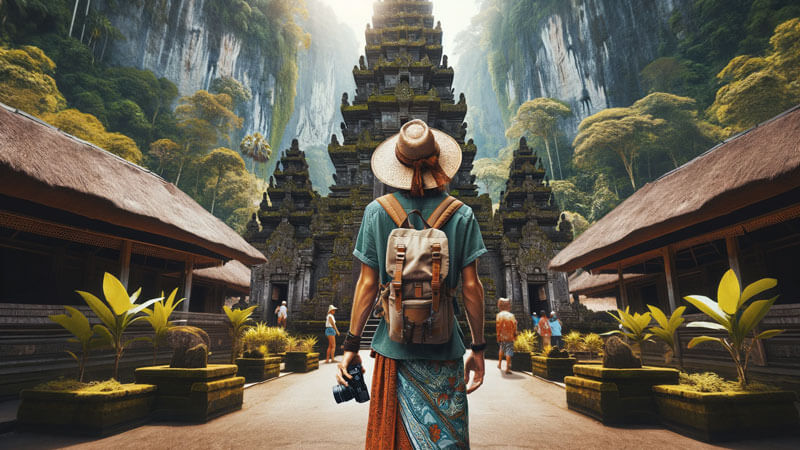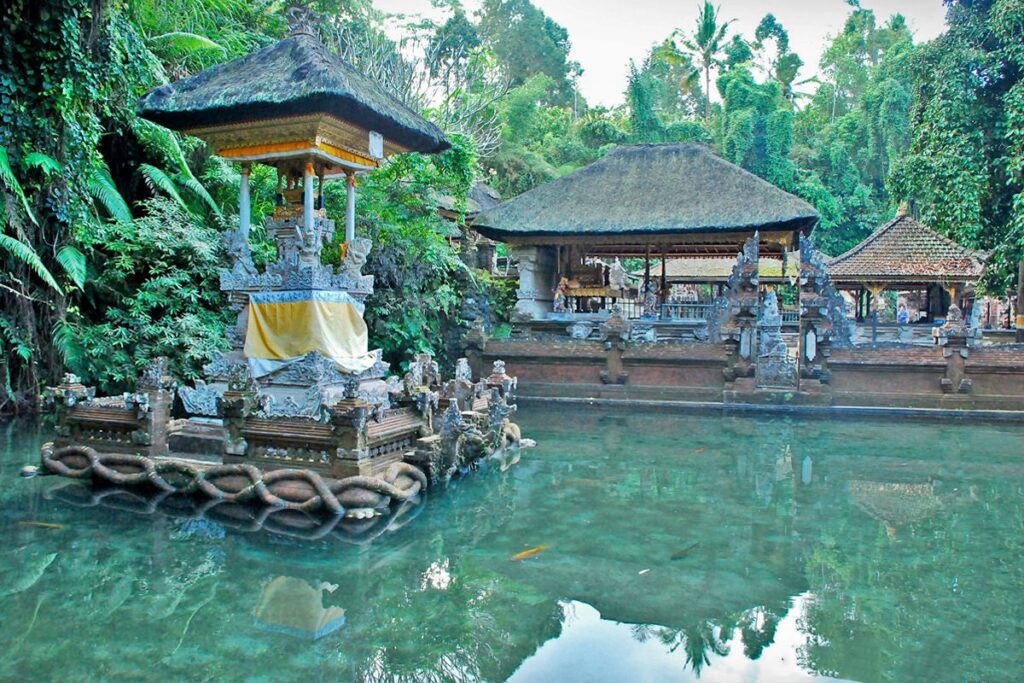Holidays are eagerly anticipated by everyone, especially avid travelers who meticulously plan their best tourist destinations to create unforgettable memories. Bali, particularly, stands out as a favored destination, attracting both local and international tourists alike. Among the myriad of attractions in Bali, the serene town of Ubud holds a special place, offering a blend of Balinese art, culture, and natural beauty. At the heart of Ubud lies the ancient marvel of Gunung Kawi Temple, beckoning travelers to delve into its rich history and tranquil surroundings.

Delving into History
Contrary to its name, Gunung Kawi isn’t a mountainous tourist spot akin to the famed Kintamani region. Rather, it stands as a testament to Bali’s cultural heritage, boasting ancient Hindu temples intricately carved into rocky cliffs. For enthusiasts of ancient Hindu architecture, Gunung Kawi Temple stands as a must-visit site in Bali. Understanding the temple’s historical significance adds depth to the visitor’s experience.
Historical records recount the reign of King Udayana, a wise ruler of Bali, whose queen, Gunapriya Dharmapathi, hailed from Java. King Udayana’s legacy, marked by his judicious governance, extended to his three children: Airlangga, Marakata, and Wungsu. Marakata, the second son, ascended to the throne after Udayana, followed by Wungsu. It was Marakata who commissioned the construction of Gunung Kawi Temple as a tribute to his father, King Udayana. The temple complex also features an intriguing overdraft believed to be a hermitage for Buddhist monks.
Location and Accessibility
Nestled amidst picturesque rice fields that stretch as far as the eye can see, Gunung Kawi Temple offers a serene retreat for weary souls. The verdant greenery and crisp mountain air provide a rejuvenating escape from urban hustle. The temple complex comprises ten temples scattered across the tranquil landscape, with five temples gracing each side of the Pakerisan River, the focal point of Gunung Kawi Temple.

Practical Information
Travelers keen on exploring Gunung Kawi Temple can find it nestled in Banjar Penaka, Tampaksiring Village, within the scenic Gianyar Regency of Bali. Situated approximately 40 km from Denpasar city, the temple is accessible by car or motorcycle, with a travel time of roughly one hour. Like many temples in Bali, Gunung Kawi Temple upholds certain customs and etiquette. Visitors are required to wear a sarong and scarf, which can be purchased or rented at the ticketing area. Some temples on the island offer complimentary sarongs and scarves, ensuring a seamless cultural immersion for all visitors.
In conclusion, Gunung Kawi Temple stands as a cultural gem in Ubud, Bali, inviting travelers to unravel its historical tapestry amidst breathtaking natural vistas. A visit to this ancient marvel promises not only a glimpse into Bali’s rich heritage but also a serene retreat for the soul amidst nature’s splendor.




